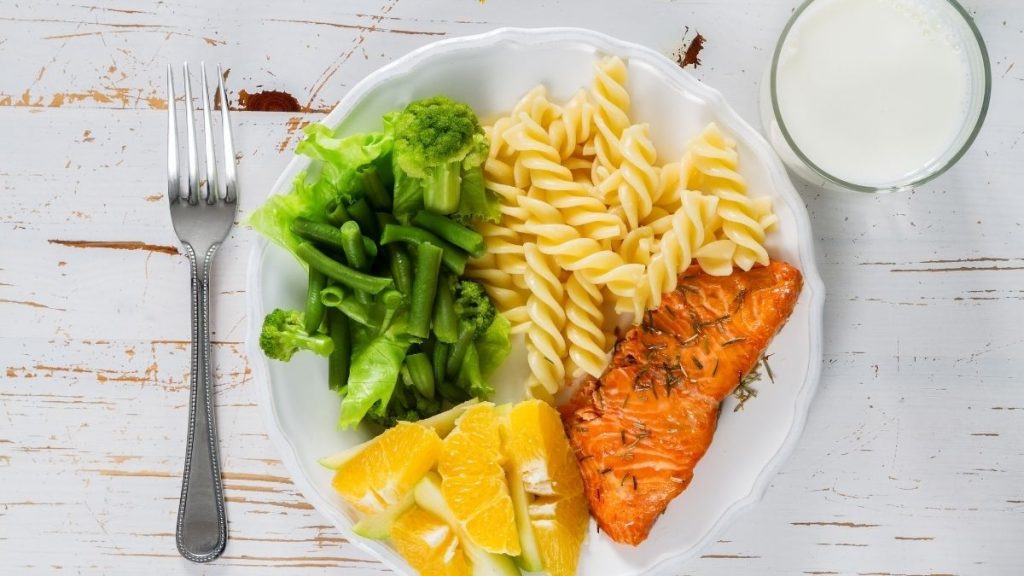Portion size plays a crucial role in achieving weight loss goals. Many people underestimate the impact of portion sizes on their calorie intake and overall diet. By understanding how portion sizes have changed over the years and the psychological factors influencing portion control, individuals can optimize their portion sizes for effective weight loss.
Understanding portion distortion
In today’s society, portion distortion has become a prevalent issue. Restaurants and food companies often serve larger portions than what is recommended for a healthy diet. This distorted perception of portion sizes can lead to overeating and weight gain. To combat portion distortion, it is essential to educate oneself about appropriate portion sizes and how they contribute to a balanced diet.
How portion sizes have changed over the years
Portion sizes have significantly increased over the past few decades. What was once considered a standard portion has now become supersized. This increase can be attributed to various factors, including marketing strategies, societal norms, and the desire for value for money. The larger portion sizes often lead to excessive calorie intake without individuals realizing it, contributing to weight gain and obesity.
The impact of portion sizes on calorie intake
Portion sizes directly impact calorie intake. When individuals consume larger portions, they tend to consume more calories without even realizing it. This can hinder weight loss efforts, as consuming excess calories leads to weight gain. By understanding the relationship between portion sizes and calorie intake, individuals can make informed choices and take control of their weight loss journey.
The psychology of portion control
Portion control is not just about physically measuring the amount of food; it also involves understanding the psychological factors that influence eating habits. Studies have shown that people tend to eat more when larger portions are presented to them. This phenomenon is known as the “portion size effect.” Additionally, the visual cues of larger portion sizes can trigger a sense of satisfaction and lead to overeating. By being aware of these psychological factors, individuals can implement strategies to overcome them and maintain portion control.
Tips for properly measuring portion sizes
Properly measuring portion sizes is essential for effective weight loss. Here are some tips to help individuals accurately measure their portions:
- Use measuring cups and spoons: Invest in measuring cups and spoons to ensure accurate portion sizes. This can be especially helpful when measuring ingredients for recipes or portioning out snacks.
- Use a food scale: A food scale can provide precise measurements for foods that are difficult to measure using cups or spoons. This is particularly useful for items like meat, cheese, and nuts.
- Read food labels: Pay attention to serving sizes listed on food labels. This information can help individuals understand how much they are consuming and make adjustments accordingly.
Strategies to reduce portion sizes without feeling deprived
Reducing portion sizes does not mean feeling deprived or hungry. Here are some strategies to help individuals reduce their portion sizes while still feeling satisfied:
- Opt for smaller plates and bowls: Using smaller plates and bowls can create an illusion of a fuller plate, making portions appear larger. This can help individuals feel satisfied with smaller amounts of food.
- Fill up on vegetables and fruits: Incorporate more vegetables and fruits into meals. These low-calorie, high-fiber options can help fill up the plate without adding excessive calories.
- Practice mindful eating: Pay attention to hunger and fullness cues while eating. Slow down, savor each bite, and listen to the body’s signals of satiety. This can prevent overeating and promote portion control.
Remember that following a diet and managing your portion size might not be as easy as you might think and if you would like to lose weight by doing so, consulting with a dietitian or nutritionist is a good idea. Here at elegant hoopoe, we are ready to give you the right plan and the consulting you need so you can follow the best diet plan possible and to better control your portion size as well. If you are looking for an experienced and certified dietitian in Dubai, give us a call.
The role of portion size in different weight loss diets
Portion sizes play a crucial role in various weight loss diets. Whether following a low-carb, low-fat, or balanced diet, the correct portion sizes of each food group ensure that individuals are meeting their nutritional needs while promoting weight loss. It is important to consult with a healthcare professional or registered dietitian to determine the appropriate portion sizes for specific dietary goals.
Portion size and mindful eating
Mindful eating goes hand in hand with portion control. By practicing mindful eating, individuals can develop a better awareness of their hunger and fullness cues, leading to improved portion control. Mindful eating involves paying attention to the taste, texture, and satisfaction derived from each bite. By focusing on the eating experience, individuals can prevent overeating and make conscious choices about portion sizes.
Conclusion
Portion control is a powerful tool in achieving weight loss goals. By understanding the importance of portion sizes, individuals can overcome portion distortion, reduce calorie intake, and maintain a balanced diet. Implementing strategies such as proper measuring techniques, mindful eating, and reducing plate sizes can help individuals optimize their portion sizes without feeling deprived. Remember, consult with a healthcare professional or registered dietitian for personalized guidance on portion sizes and weight loss strategies.




